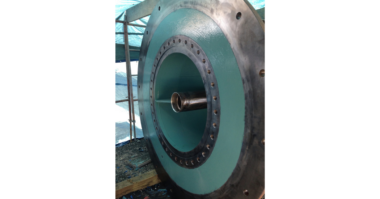As a result of the device’s high power requirements, gas detection has traditionally been a wired operation. As sensor and battery technology advances, battery-operated, fixed-point wireless gas detection solutions are emerging. There are both proprietary and non-proprietary (i.e. open) wireless protocols in the market today, this article will be focusing only on open protocols. In particular, UE Controls will compare two prevalent open protocols, namely ISA100 and WirelessHART, from the standpoint of how it benefits users.
WirelessHART and ISA100 share common characteristics and these translate to similar user benefits. Here are a few:
- Security: Both protocols utilize the Advanced Encryption Standard (AES)-128 bit encryption. An encryption key is used to keep every message that is sent and received over the network private. This ensures robust data security.
- Low power consumption: Both protocols are based on the IEEE 802.15.4 standard and are used in low-power, wireless local area networking. Battery-powered WirelessHART and ISA100 devices spend most of their time in low-power mode and are only ‘called upon’ when receiving and transmitting data. As a result, many of these devices are now capable of multi-year battery life.
- Reliability: Both protocols rely on mechanisms like channel hopping and channel blacklisting to minimize wireless interference. This ensures high reliability of the wireless signals and ability to manage coexistence.
On the flip side, WirelessHART and ISA100 have differences that translate to different user benefits. These contrasting characteristics do not point to disadvantages in either protocol but offer varying benefits depending on the application. Here are a few:
- Topology: WirelessHART offers only mesh topology whereas ISA100 offers mesh, star, or fixed-point topology. The mesh topology has self-healing and self-organizing capabilities as it reroutes any broken communication paths. The star and fixed-point topology generally offers a greater saving on battery power (due to non-routing characteristics) but would require more careful network planning by the user.
- Vendor Interoperability: WirelessHART has a relatively fixed network design as defined by its stringent specifications. All WirelessHART devices, regardless of manufacturer, will have to comply with all features of the specification, meaning these devices are expected to demonstrate exact behavior in a network. This ensures the benefit of multi-vendor interoperability. On the contrary, ISA100 has a more flexible network design. While there is an overarching specification, vendors have the option to implement different features of the standard. This promotes network flexibility but the variation in implementation profiles could cause interoperability issues between ISA100 devices from different vendors.
- Network Configurability: WirelessHART is built upon HART specifications with established commands that make it easy for users familiar with the prevalent HART protocol to implement. The tradeoff here is the limited network configurability since HART commands have all been pre-defined. ISA100 offers greater network configurability because it has more options found within the various stack layers, but requires deeper technical knowledge to deploy effectively as it is a more complex specification.
- Scalability: WirelessHART uses a local address system with no IP addressing. This limits the addressing to about 30,000 in a WirelessHART network. ISA100 offers 6LoWPAN which specifies the internet protocol version 6 (IPv6) and allows for almost unlimited addressing in the network, resulting in much greater network scalability.
WirelessHART and ISA100 have different approaches in their design intent. In essence, WirelessHART is aimed at facilitating multi-vendor interoperability as well as ease of network deployment whereas ISA100 is aimed at network flexibility and scalability.
Which benefit is most relevant for your gas detection application?
For a user starting to explore the possibility of wireless gas detection using open protocols, the ease of deployment might be the first and primary consideration before others. In that case, the WirelessHART protocol might just be the most appropriate protocol.





Comments